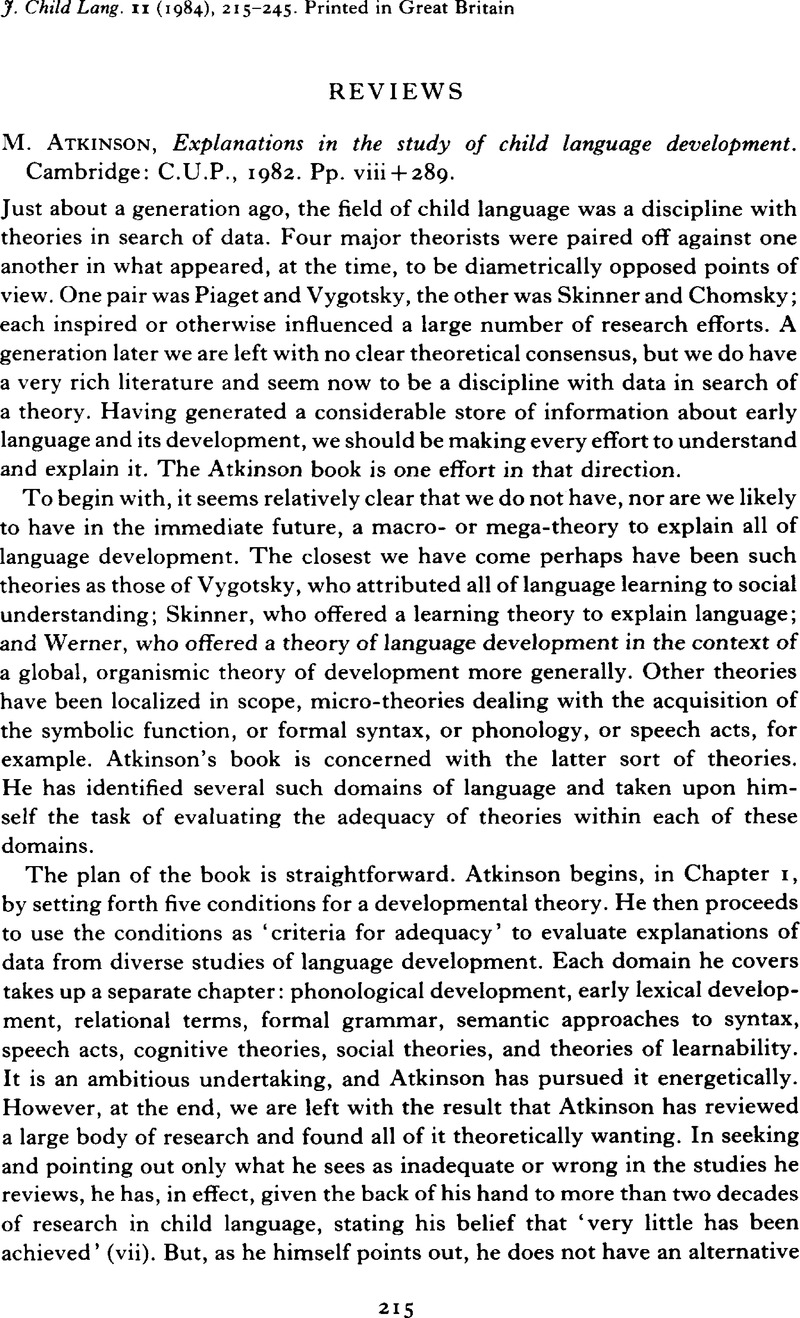No CrossRef data available.
Article contents
Published online by Cambridge University Press: 26 September 2008
Abstract
An abstract is not available for this content so a preview has been provided. Please use the Get access link above for information on how to access this content.

- Type
- Reviews
- Information
- Copyright
- Copyright © Cambridge University Press 1984
References
REFERENCES
Bloom, L. (1970). Language development: form and function in emerging grammars. Cambridge, Mass.: M.I.T.Google Scholar
Bloom, L. (1981). The importance of language for language development: linguistic determinism in the 1980s. AnnNYAcSci 379. 160–71.Google Scholar
Bloom, L., Miller, P. & Hood, L. (1975). Variation and reduction as aspects of competence in language development. In Pick, A. (ed.), Minnesota Symposia on Child Psychology, Vol. 9. Minneapolis: University of Minnesota Press.Google Scholar
Bowerman, M. (1973). Early syntactic development: a cross-linguistic study with special reference to Finnish. Cambridge: C.U.P.Google Scholar
Braine, M. (1963). The ontogeny of English phrase structure: the first phase. Lg 39. 1–13.Google Scholar
Braine, M. (1976). Children's first word combinations. Monogr. Soc. Res. Ch. Devel. 41. No. 164.Google Scholar
Brown, R. & Hanlon, C. (1970). Derivational complexity and order of acquisition in child speech. In Hayes, J. (ed.), Cognition and the development of language. New York: Wiley.Google Scholar
Clark, E. (1983). Meanings and concepts. In Flavell, J. & Markman, E. (eds), Cognitive development, Vol. 3.Google Scholar
Clark, E. (1983). Meanings and concepts. In Mussen, P. (ed.), Carmichael's manual of child psychology. New York: Wiley.Google Scholar
de Villiers, J. & de Villiers, P. (1978). Language acquisition. Cambridge, Mass.: Harvard University Press.Google Scholar
Jakobson, R. (1941/1968). Child language, aphasia and phonological universals. The Hague: Mouton.Google Scholar
Kuhn, D. (1983). On the dual executive and its significance in the development of developmental psychology. In Kuhn, D. & Meacham, J. (eds), On the development of developmental psychology. Basel: Karger.Google Scholar
Wexler, K. & Culicover, P. (1980). Formal principles of language acquisition. Cambridge, Mass.: M.I.T.Google Scholar


